|
|
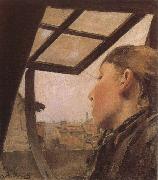 |
Laurits Andersen Ring
|
|
Danish, 1854-1933
Laurits Andersen Ring (1854-1933) was one of the foremost painters of Danish symbolism. He was born as Laurits Andersen in the village Ring in southern Zealand. In 1881 he the took the name of his birth place, and was since known as L.A. Ring.
For a while, he lived at Baldersbronde near Hedehusene in the old school building, which was later to be the home of another painter, Ludvig Find. Ring has produced several paintings from these towns.
As a painter, he never distanced himself from his humble origin, but rather made it his dominant theme. Most of his paintings depict the village life and landscapes of southern Zealand from Præsto to Nestved. There are several examples of his work at practically every Danish art museum including the Hirschsprung Collection in Copenhagen.
He was married on July 25, 1896 to fellow painter Sigrid Kahler, who was the daughter of ceramic artist Herman Kahler. |
|
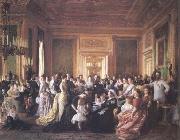 |
Laurits Tuxen
|
|
Danish Painter, 1853-1927
was a Danish painter specialising in figure painting. He was also associated with the Skagen group of painters. Tuxen grew up in Copenhagen and studied at the Royal Danish Academy of Art where together with P.S. Krøyer he was considered to be one of the best painters. He first visited Skagen in 1870 and he returned on several occasions. In the 1880s and 1890s, he travelled widely painting portraits for Europe's royal families including Christian IX of Denmark, Queen Victoria and the Russian royalty. In 1901, after the death of his first wife Ursule, he married the Norwegian Frederikke Treschow and shortly aferwards purchased Madam Bendsen's house at the artists' colony in Skagen in the north of Jutland, converting it into a stately summer residence. |
|
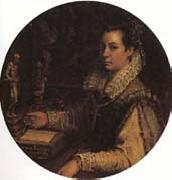 |
Lavinia Fontana
|
|
Italian Painter, 1552-1614
Daughter of Prospero Fontana. She was trained by her father and followed his Mannerist style. Her first recorded works, which date from 1575, were small paintings for private devotion, such as the Holy Family (Dresden, Gemeldegal.). By 1577 she had become established as a portrait painter in Bologna. Works of this date include the Self-portrait at the Harpsichord (Rome, Gal. Accad. S Luca) and the portrait of Senator Orsini (Bordeaux, Mus. B.-A.). Her portrait style reflects the formality of central Italian models as well as the naturalistic tendencies of the north Italian tradition. The elegantly costumed Orsini is shown seated at a table, with a suite of rooms opening behind him, a setting recalling such Florentine portraits of the 1530s as Agnolo Bronzino's Bartolommeo Panciatichi (Florence, Uffizi). Lavinia used a similar setting for other portraits, including the Gozzadini Family (1584; Bologna, Pin. N.). Female sitters are also shown in elaborate dress, with particular attention paid to details of embroidery and jewels, and they are often accompanied by small dogs |
|
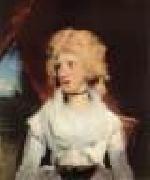 |
LAWRENCE, Sir Thomas
|
|
English painter (b. 1769, Bristol, d. 1830, London).
Thomas Lawrence was born in Bristol on May 4, 1769. At Devizes, where his father was landlord of the Black Bear Inn, Thomas's talents first became known. Fanny Burney, a prodigy herself, reports that in 1780 Sir Joshua Reynolds had already pronounced Lawrence the most promising genius he had ever met. When Thomas was 10, his father moved the family to Oxford and then to Bath to take advantage of the portrait skill of his son. At the age of 17 Lawrence began to paint in oil, all his previous work having been in pastel. In 1787 the family moved to London, and by 1789 he was challenging Reynolds. When Reynolds died in 1792, Lawrence was appointed to the lucrative post of painter in ordinary to the king. He soon became the foremost portrait painter in England, a position he maintained until his death. His portraits of women are models of beauty and elegance, whether the sitter be a tragic actress like Mrs. Siddons, a social figure like the Princess de Lieven, or a personal friend. At the close of the Napoleonic Wars, Lawrence was knighted and commissioned to paint the leading sovereigns and statesmen of Europe. When he returned to England in 1820, he was elected president of the Royal Academy; he handled the affairs of his office with tact and urbanity. He died on Jan. 7, 1830. Following the English masters of the 18th century, Reynolds, Thomas Gainsborough, and George Romney, Lawrence carried on the great tradition of society portraiture and raised it to new heights of dash and elegance, though not of psychological penetration. He was by no means an artist of the astonishing insight of Gainsborough, and he did not have the occasionally disconcerting originality of Reynolds. Lawrence had their faults: all were affected by the distorting demands of their fashionable clientele, and all succumbed to them. He had the least to say, and he reflected his sitters' own best views of themselves, yet even they must sometimes have been surprised at their own magnificence. Handsome his portraits undoubtedly are; all the women are strikingly beautiful, the men brave and distinguished. Lawrence enjoyed his great success. He lived for his work, never married, and was a prodigious worker. He was of an exceptionally generous nature, as an artist and as a man, with a rare talent for appreciating and encouraging the talents of others. He was an ardent collector of Old Master drawings; his collection, which was dispersed after his death, |
|
|
|
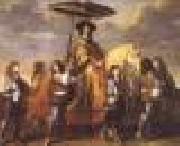 |
LE BRUN, Charles
|
|
French painter (b. 1619, Paris, d. 1690, Paris)
French painter and designer. He dominated 17th-century French painting as no other artist; it was not until over a century later, during the predominance of Jacques-Louis David, that artistic authority was again so concentrated in one man. Under the protection of a succession of important political figures, including Chancellor Pierre S?guier, Cardinal Richelieu and Nicolas Fouquet, Le Brun created a series of masterpieces of history and religious painting. For Louis XIV and his chief minister Jean-Baptiste Colbert he executed his greatest work, the royal palace of Versailles: an almost perfect ensemble of architecture, decoration and landscape. After Colbert's death in 1683, he was no longer able to count on prestigious commissions |
|
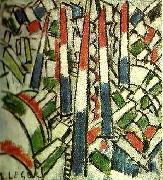 |
le corbusier
|
|
Charles-Edouard Jeanneret-Gris, who chose to be known as Le Corbusier (French pronunciation: October 6, 1887 ?C August 27, 1965), was a Swiss-French architect, designer, urbanist, writer and also painter, who is famous for being one of the pioneers of what now is called Modern architecture or the International style. He was born in Switzerland and became a French citizen in his thirties.
He was a pioneer in studies of modern high design and was dedicated to providing better living conditions for the residents of crowded cities. Later commentators have criticized Le Corbusier's monoliths as soulless and expressive of his arrogance in pioneering his form of architecture.
His career spanned five decades, with his buildings constructed throughout central Europe, India, Russia, and one each in North and South America. He was also an urban planner, painter, sculptor, writer, and modern furniture designer.
Le Corbusier adopted his pseudonym in the 1920s, allegedly deriving it in part from the name of a distant ancestor, "Lecorbesier." However, it appears to have been an earlier (and somewhat unkind) nickname, which he simply decided to keep. It stems from the French for "the crow-like one". In the absence of a first name, some have also suggested it suggests "a physical force as much as a human being," and brings to mind the French verb courber, to bend. |
|
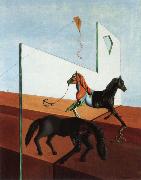 |
le dimanche
|
|
was a Spanish surrealist painter.
Born in San Cristebal de La Laguna on the island of Tenerife, Domenguez spent his youth with his grandmother in Tacoronte and devoted himself to painting at a young age after suffering a serious illness which affected his growth and caused a progressive deformation of his facial bone frame and limbs.
He went to Paris at 21 where he first worked for his father in the central market of Les Halles, and spent his nights drinking in cabarets. He then frequented some art schools, and visited galleries and museums.
Domenguez was rapidly attracted by avant-garde painters, notably Yves Tanguy and Pablo Picasso, whose influences were visible in his first works. At 25 he painted a self-portrait full of premonition as he showed himself with a deformed hand and with the veins of his arm cut. He chose to kill himself 27 years later by cutting his veins.
In 1933 Domenguez met Andre Breton, a theoretician of Surrealism, and Paul Éluard, known as the poet of this movement, and took part a year later in the Surrealist exhibition held in Copenhagen and those of London and Tenerife in 1936.
He took up the Russian-invented technique of decalcomania in 1936, using gouache spread thinly on a sheet of paper or other surface (glass has been used), which is then pressed onto another surface such as a canvas. |
|
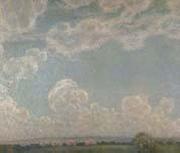 |
Le Sidaner Henri
|
|
Ile Maurice 1862-Versailles,1939
was an impressionist painter born to a French family in Port Louis, Mauritius. In 1870 he and his family settled in Dunkirk. Le Sidaner received most of his tutelage from the Ecole des Beaux-Arts under the instruction of Alexandre Cabanel but later broke away due to artistic differences. He traveled extensively throughout France and also visited many cities around the globe such as London, New York, Venice and Paris as well as some small villages throughout Europe. Le Sidaner exhibited at the Salon, the Galeries Georges Petit in Paris and the Goupil Gallery in London. He lived in Gerberoy, France. Le Sidaner's work was referenced in Marcel Proust's novel In Search of Lost Time. |
|
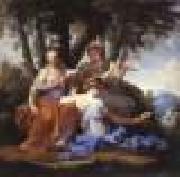 |
LE SUEUR, Eustache
|
|
French painter (b. 1616/17, Paris, d. 1655, Paris).
French painter and draughtsman. He was one of the most important painters of historical, mythological and religious pictures in 17th-century France and one of the founders of French classicism. He was long considered the 'French Raphael' and the equal of Nicolas Poussin and Charles Le Brun. His reputation reached its zenith in the first half of the 19th century, but since then it has been in decline, largely as a result of the simplified and saccharine image of the man and his art created by Romantic writers and painters. Nevertheless, more recent recognition of the complexity of his art has resulted in a new interest in him and in his place in the evolution of French painting in the 17th century. Despite the almost total absence of signed and dated works, the chronology of Le Sueur's oeuvre can be established with the aid of a few surviving contracts, |
|
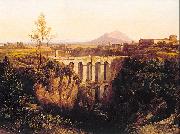 |
Lear, Edward
|
|
English Painter and Illustrator, 1818-1888
English painter, draughtsman, illustrator and writer. In the 1860s Lear described himself as 'Greek Topographical Painter par excellence', aspiring to the title of 'Painter-Laureate and Boshproducing-Luminary forthwith' (quoted in 1983 exh. cat., p. 14). This whimsical summary of his versatile activities as topographical draughtsman, oil painter, traveller, writer and illustrator of nonsense rhymes and stories is typical of Lear's idiosyncratic literary style. It reflected his eccentric personality. He was epileptic and prone to fits of deep depression. In addition, owing to family misfortunes, |
|
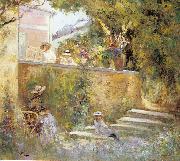 |
Lebasque, Henri
|
|
French Painter, 1865-1937
was born in 1865 at Champign (Maine-et-Loire). He started his education at the Ecole des Beaux-Arts d'Angers, and moved to Paris in 1886. Here, Lebasque started studying under Leon Bonnat, and assisted Humbert with the decorative murals at the Pantheon. Around this time, Lebasque met Camille Pissarro and Auguste Renoir, who later would have a large impact on his work. Lebasque's vision was coloured by his contact with younger painters, especially Edouard Vuillard and Pierre Bonnard, founders of the The Nabis' Group and the Intimists who first favoured the calm and quietude of domestic subject matter. From his first acquaintance with Georges Seurat and Paul Signac, Lebasque learnt the significance of a colour theory which stressed the use of complementary colours in shading. Lebasque was a founding member of the Salon d'Automne in 1903 with his friend Henri Matisse. Two years later a group of artists exhibited there including Georges Rouault, Andre Derain, Edouard Vuillard and Henri Matisse while keeping solid links with other artists such as Gustave Rouault, Raoul Dufy, Louis Valtat and especially Henri Manguin, who made him discover the south of France. His time in South of France would lead to a radical transformation in Lebasque's paintings, changing his colour palette forever. Other travels included the Vendee, Normandie and Brittany, although Lebasque would always prefer the small idyllic villages of the South of France. Lebasque had some commercial success during his lifetime. He worked on the decorations at the theatre of the Champs-Elyses and of the Transatlantique sealiner. |
|
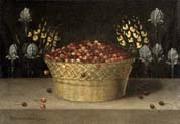 |
LEDESMA, Blas de
|
|
Spanish painter documented 1602-1614 in Granada,Spanish painter. He is known to have worked in Granada from 1602, and in 1614 he designed a stucco vault decoration for the Alhambra. Archival sources testify to his renown as a painter of decorative fresco grotesques (untraced) and still-lifes. His activity as a still-life painter remains debatable, partly because he has been confused with Blas de Prado and also because of Torres Marten's controversial attributions. Ledesma's only unanimously accepted autograph painting is Still-life with Cherries and Flowers (Atlanta, GA, High Mus. A.), signed in Granada. A highly decorative painting, it shows none of the sophistication of still-lifes by Juan Senchez Cot?n, in Granada from 1603. It is painted meticulously and drily. Depicting a severely drawn, rather flat basket on a narrow ledge flanked by flowers behind it, the rigorously symmetrical composition is relieved only by soft lighting and the studied disarray of some fallen cherries. Two other unsigned and poorly preserved still-lifes of analogous subject-matter have been attributed to Ledesma |
|
|
|
|
|
|
|
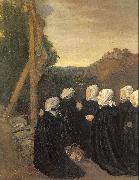 |
Legros, Alphonse
|
|
French-born British Painter and Sculptor, 1837-1911
British etcher, painter, sculptor and teacher of French birth. He is said to have been apprenticed at the age of 11 to a sign-painter, at which time he may also have attended classes at the Ecole des Beaux-Arts in Dijon. He was employed as assistant on a decorative scheme in Lyon Cathedral before moving in 1851 to Paris, where he worked initially for the theatre decorator C. A. Cambon (1802-75). He soon became a pupil of Horace Lecoq de Boisbaudran, whose methodical instruction and liberality in fostering individual talent proved of lasting benefit to Legros. In 1855 he enrolled at the Ecole des Beaux-Arts, Paris, attending irregularly until 1857. During this period Legros had a taste for early Netherlandish art and for French Romanticism, which was later superseded by his admiration for Claude, Poussin and Michelangelo. |
|
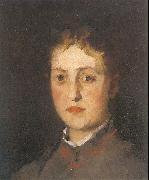 |
Leibl, Wilhelm
|
|
German Realist Painter, 1844-1900
German painter, draughtsman and etcher. In 1861 he abandoned his apprenticeship as a locksmith in order to train as a precision instrument maker, though a month or so later he decided to train as an artist, at first under the Cologne history painter and writer Hermann Becker (1817-85). In 1863 he moved to Munich; he studied there from March 1864, at the Akademie der Bildenden K?nste, initially under Philipp von Foltz and Alexander Straehuber, drawing from plaster casts, and later in Hermann Ansch?tz's painting class. Here, Arthur von Ramberg (1819-75) stimulated Leibl's sensitivity to colour; and Karl Theodor von Piloty encouraged him to observe reality and incorporate its lessons boldly into compositions on historical themes. From the start, however, Leibl tended to think of his pictures in terms of form rather than content. While at the Akademie he first reached a standard of excellence with his draughtmanship, which is notable for its directness and objectivity. As an artist, Leibl's early works were not especially promising. However, as occurred throughout his career, a long period of mediocrity was crowned by an unexpected masterpiece, such as his portrait drawing of Aunt Josepha (c. 1864; Cologne, Wallraf-Richartz-Mus.). This is particularly striking for Leibl's use of the hands to add to the expression of the sitter's character and mood, a device he was to use frequently in later work. In Munich, Leibl supplemented the teaching of the Akademie by studying the works of the Old Masters in the Alte Pinakothek: he paid particular attention to painters of the Baroque period such as van Dyck, Cornelis de Vos and Rubens, and also to other great masters of portraiture such as Frans Hals and Vel?zquez. The presentation of the subject found in such works is reflected in Leibl's portrait of Frau Gedon (1869; Munich, Neue Pin.). When the work was shown at the Grossen Internationale Kunstausstellung in Munich in 1869 it was singled out as the best oil painting of the exhibition by Gustave Courbet and, as a result, Leibl was honoured with an invitation to Paris, where he arrived on 13 November 1869. |
|
|
|
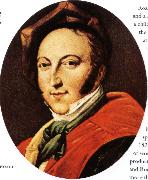 |
leigh hunt
|
|
British writer who defended the romanticism of Keats and Shelley (1784-1859)
Synonyms: Hunt, James Henry Leigh Hunt |
|
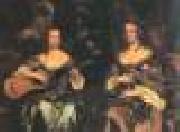 |
LELY, Sir Peter
|
|
Dutch/English painter (b. 1616, Soest, d. 1680, London
Dutch painter, draughtsman and collector, active in England. By a combination of ability and good fortune, he rapidly established himself in mid-17th-century London as the natural successor in portrait painting to Anthony van Dyck. Between van Dyck's death in 1641 and the emergence of William Hogarth in the 1730s, Lely and his successor, Godfrey Kneller, were the leading portrait painters in England. After the restoration of the monarchy in 1660, Lely dominated the artistic scene, and his evocation of the court of Charles II is as potent and enduring as was van Dyck's of the halcyon days before the English Civil War. Although Lely's reputation was seriously damaged by portraits that came from his studio under his name but without much of his participation, his development of an efficient studio practice is of great importance in the history of British portrait painting. The collection of pictures, drawings, prints and sculpture |
|
 |
Lemaire, Jean
|
|
1763-64, oil on canvas, The Hermitage, St. Petersburg |
|
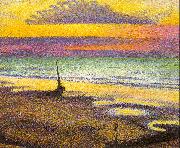 |
Lemmen, Georges
|
|
Belgian Art Nouveau Painter, 1865-1916
Belgian painter and decorative artist. He showed a precocious talent, first exhibiting in 1875. His only formal study was at a local school of drawing. Between 1884 and 1886 he showed at the Essor group in Brussels paintings that were based on Derer and Holbein and closely related to those of Lemmen's contemporary, Khnopff. When Lemmen became a member of Les XX in 1888 his style developed quickly, influenced principally by French Neo-Impressionism and the English Arts and Crafts Movement. Lemmen adopted the pointillist technique following Seurat's first showing with Les XX in 1887. His best pointillist canvases include The Carousel (1890-91; Toulon, Mme Thevenin-Lemmen priv. col., see Belgian Art, 1880-1914, exh. cat., New York, Brooklyn |
|
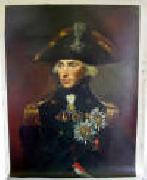 |
Lemuel Francis Abbott
|
|
1760-1803
Lemuel Francis Abbott Locations
English painter. He was the son of a clergyman and went to London to study with Francis Hayman shortly before the latter death in 1776; he may have completed his studies in Derby with Joseph Wright of Derby. By the early 1780s Abbott had established a busy portrait practice in London. The formula he adopted for most of his head-and-shoulder portraits can be seen in Sir William Herschel (1785; London, N. Mar. Mus.): the body is parallel to the picture plane, and the sitter head is moved into three-quarter profile, as if his attention has been suddenly distracted. In later portraits, such as those of fellow artists Francesco Bartolozzi (c. 1792; London, Tate) or Joseph Nollekens (c. 1797; London, N.P.G.), the sitter hand or some attribute balances the movement of the head. Only male portraits by Abbott are known, and his patrons were mostly drawn from the professional classes, particularly the Navy; there are several versions of Lord Nelson (e.g. 1798; London, N. Mar. Mus.). His style is crisp but scratchy in technique, and often the anatomy of his figures is inaccurate. Paint is handled in a manner comparable with that of Gainsborough Dupont, but Abbott sense of composition is superior. In 1798 he was certified insane, but he continued to exhibit at the Royal Academy in London for two further years. Several of his works were probably finished by another hand. |
|
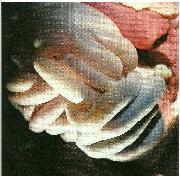 |
lennart nilsson
|
|
1992, intestines of a new-born baby . colour photograph. lennart nilsson photography ab, stockholm |
|
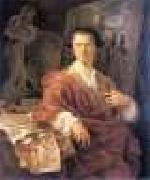 |
LENS, Andries Cornelis
|
|
Flemish painter (b. 1739, Antwerpen, d. 1822, Bruxelles).
Flemish painter and writer. He was the son of the flower painter Cornelis Lens (d after 1766) and studied first under Charles Ykens II (1719-53) and then under Balthazar Beschey. In 1756 he was awarded first prize at the Academie of Antwerp and in 1763 was appointed to the staff on the strength of his decoration (destr.) of the refectory of the Alexians at Lier. He also came to the attention of Charles Alexandre, Duke of Lorraine and Bar, Governor-General of the Netherlands |
|
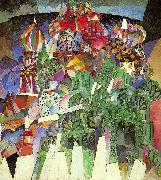 |
Lentulov, Aristarkh
|
|
Russian Painter, 1882-1943
Russian painter. He studied art in Penza (1897-1903), Kiev (1903-5), and in St Petersburg (1906) under Dmitry Kardovsky. He participated in major exhibitions, including The Wreath (1907-8), The Link (1908) and Union of Russian Artists (1910). He was a founder-member in 1910 of the avant-garde exhibiting society the JACK OF DIAMONDS |
|
|
|
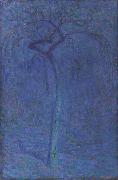 |
Leo Gestel
|
|
Leo Gestel (11 November 1881, Woerden- 26 November 1941, Hilversum) was a Dutch painter. His father Willem Gestel was also an artist. Leo Gestel experimented with cubism, expressionism, futurism and postimpressionism. Along with Piet Mondrian he was among the leading artists of Dutch modernism. |
|
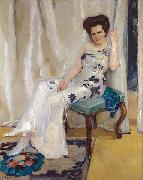 |
Leo Putz
|
|
Germany (1869 -1940 ) - Painter
|
|
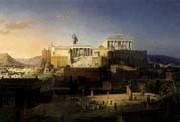 |
Leo von Klenze
|
|
German Architect and Painter, 1784-1864,was a German neoclassicist architect, painter and writer. Court architect of Bavarian King Ludwig I, Leo von Klenze was one of the most prominent representatives of Greek revival style. Von Klenze studied architecture in Berlin and Paris. Between 1808 and 1813 he was a court architect of Jerome Bonaparte, King of Westphalia. Later he moved to Bavaria and in 1816 began to work as court architect of Ludwig I. The King's passion for Hellenism shaped the architectural style of von Klenze. He built many neoclassical buildings in Munich, including the Ruhmeshalle and Monopteros temple. On Konigsplatz he designed probably the best known modern Hellenistic architectural ensemble. Near Regensburg he built the Walhalla temple, named after Valhalla, the home of gods in Norse mythology. When Greece won its independence, Ludwig I's son Otto became the country's first king. Von Klenze was invited to Athens to submit plans of city reconstruction in the style of Ancient Greece. Russian Emperor Nicholas I commissioned von Klenze to design a building for the New Hermitage, a public museum that housed Greek, Roman, and Egyptian antiquities. Von Klenze also designed and arranged museum galleries in Munich, including the Glyptothek and Alte Pinakothek. Von Klenze was not only an architect, but also an accomplished painter and draughtsman. In many of his paintings ancient buildings were depicted. Those served as models for his own architectural projects. Klenze studied ancient architecture during his travels to Italy and Greece. He also participated in excavations of ancient buildings in Athens and submitted projects for the restoration of the Acropolis. Klenze collected works of important contemporary German painters. He sold his collection, including 58 landscapes and genre paintings, to King Ludwig I in 1841. |
|
|
|
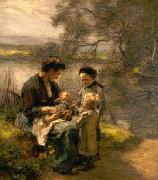 |
Leon Augustin Lhermitte
|
|
(1844 - 1925) was a French realist painter and etcher whose primary subject matter was of rural scenes depicting the peasant worker.
He was born in Mont-Saint-Pere. A student of Lecoq de Boisbaudran, he gained recognition after his show in the Paris Salon in 1864.
His many awards include the French Legion of Honour (1884) and the Grand Prize at the Exposition Universelle in 1889. Lhermitte died in Paris in 1925.
Lhermittees innovative use of pastels won him the admiration of his contemporaries. Vincent Van Gogh wrote that eIf every month Le Monde Illustre published one of his compositions ... it would be a great pleasure for me to be able to follow it. It is certain that for years I have not seen anything as beautiful as this scene by Lhermitte ... I am too preoccupied by Lhermitte this evening to be able to talk of other things.e
Lhermitte's etchings and paintings are housed in museums around the world including Boston, Washington, Chicago, Montreal, Brussels, Rheims, Paris, Moscow and Florence.
|
|
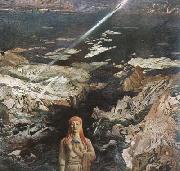 |
Leon Bakst
|
|
Russian Art Deco Designer and Illustrator, 1866-1924 |
|
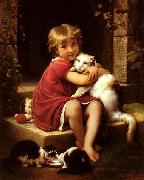 |
Leon Bazille Perrault
|
|
(20 June 1832, Poitiers - 1908, Royan) was a French painter.
A student of William Bouguereau and François-Edouard Picot, he exhibited at the Salon from 1863 onwards, producing several works, in the academic tradition. He was famous for his le petit naufrag (The little shipwrecked boy, 1874) and his paintings of children.
|
|
|
|
 |
Leon Benouville
|
|
Paris 1821 - Paris 1859.
was a French painter. Leon Benouville first studied with his elder brother Jean-Achille Benouville (1815-1891) in the studio of François-Edouard Picot before he transferred to Ecole des Beaux-Arts in 1837. Like his brother he received the Prix de Rome in 1845. In Rome, as a Prix de Rome pensionary at the Villa Medici, he stayed with his brother and met the sculptor Charles Gumery. |
|
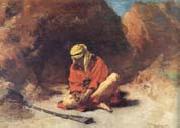 |
Leon Bonnat
|
|
French Academic Painter, 1833-1922,was a French painter. He was born in Bayonne, but from 1846 to 1853 he lived in Madrid, Spain, where his father owned a bookshop. In Madrid he received his artistic training under Madrazo. He later worked in Paris, where he became known as a leading portraitist. His many portraits show the influence of Velazquez and the Spanish realists. He won a medal of honor at Paris in 1869, where he became one of the leading artists of his day. Bonnat went on to become a professor at the Ecole des Beaux Arts in 1882. In May 1905 he succeeded Paul Dubois as director. His vivid portrait-painting is his most characteristic work, but his subject pictures, such as the Martyrdom of St Denis in the Pantheon, are also famous. Some of Bonnat's more notable students include: Gustave Caillebotte, Suzor-Cote, Georges Braque,Raoul Dufy, Marius Vasselon, Fred Barnard, |
|
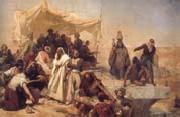 |
Leon Cogniet
|
|
French Academic Painter, 1794-1880,was a French painter. Cogniet was born in Paris. In 1812, he entered the Ecole des Beaux-Arts in Paris, where he studied under Pierre-Narcisse Guerin at the same time as Delacroix and Gericault. He was a resident at the Villa Medici, in Rome, from 1817 to 1822. A romantic painter, his main subjects were history and portraits, and in 1817 he won the Prix de Rome. He died in Paris in 1880. |
|
 |
Leon Comerre
|
|
Leon François Comerre French. 1850 - 1934 |
|
|
|
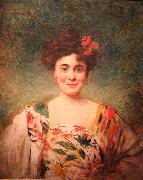 |
Leon Joseph Florentin Bonnat
|
|
(20 June 1833 - 8 September 1922) was a French painter.
He was born in Bayonne, but from 1846 to 1853 he lived in Madrid, where his father owned a bookshop. While tending his father's shop, he copied engravings of works by the Old Masters, developing a passion for drawing. In Madrid he received his artistic training under Madrazo. He later worked in Paris, where he became known as a leading portraitist, never without a commission. His many portraits show the influence of Velezquez, Jusepe de Ribera and other Spanish masters, as well as Titian and Van Dyke, whose works he studied in the Prado. Following the period in Spain Bonnat worked the ateliers of the history painters Paul Delaroche and Leon Cogniet (1854) in Paris. Despite repeated attempts, he failed to win the prix de Rome, finally receiving only a second prize. However, a scholarship from his native Bayonne allowed him to spend three years in Rome (1858 - 60) independently. During his stay in Rome, he became friends with Edgar Degas, Gustave Moreau, Jean-Jacques Henner and the sculptor Henri Chapu.
He won a medal of honor in Paris in 1869, going on to become one of the leading artists of his day. Bonnat went on to win the Grand Officer of the Legion d'honneur and became a professor at the Ecole des Beaux Arts in 1882. Bonnat was quite popular with American students in Paris. In addition to his native French, he spoke Spanish and Italian and knew English well, to the relief of many monolingual Americans. In May 1905 he succeeded Paul Dubois as director of the Ecole des Beaux-Arts. Bonnat "was a liberal teacher who stressed simplicity in art above high academic finish, as well as overall effect rather than detail," explains Julius Kaplan (see References). Bonnat's emphasis on overall effect on the one hand, and rigorous drawing on the other, put him in a middle position with respect to the Impressionists and academic painters like his friend Jean-Leon Gerôme.
|
|
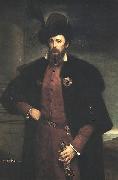 |
Leon Kaplinski
|
|
(1824-1873) was a Polish painter and political activist.
Born 1824 in Lisew not far from Warsaw, Leon was the son of a small landowner and an eminent freemason Jan Kaplieski. The Kaplieskis were a Frankist family; his grandfather Eliasz Adam Kaplieski was one of the last known Frankists. Leon Kaplieski studied law and philosophy in Warsaw and Wrocław (Breslau). He was engaged in revolutionary underground groups, fled from the part of Poland under Russian rule, was briefly held and interrogated by the Prussian police, and took part in the revolutionary movement in 1848. In the same year Kaplieski emigrated to Paris where he spent most of his remaining years. He took part in Polish emigre political activities, closely connected with the circle of Hotel Lambert and the Czartoryski family, accompanied the Count Witold Czartoryski during his trip to the Balkans and the Near East. Kaplieski also edited the periodical Ephemerides Polonaises. He was married to Helena Hryniewiecka. In 1871 he moved back to Poland, living mostly in Krakew, and died in 1873 in Milosław. He befriended several well-known Polish artists and writers, including Henryk Rodakowski, Jan Matejka, and Cyprian Kamil Norwid.
Kaplieski studied art in Poland and later in Paris. His first known works are copies of paintings by famous Italian artists; later he became known and appreciated for his patriotic historical paintings as Wernyhora (1855). His best works are portraits: of his mother Julia (1860), the writer Bohdan Zaleski (1857), Count Adam Jerzy Czartoryski (about 1860), and an autoportrait as a Templar (about 1872). Many of his paintings and other works have perished or been lost. Mainly influenced by classical Italian art and his contemporary Rodakowski, L.K. continued the tradition of academic painting and had no interest for the emerging modernist tendencies of the mid-nineteenth century. He won some recognition in France, participating in the Paris art salons. L.K. wrote some poems and a short novel Nad Wisłą (On Wisla).
|
|
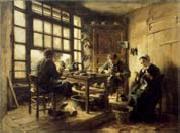 |
Leon Lhermitte
|
|
1844-1925 was a French painter and etcher of the late nineteenth century. A student of Lecocq de Boisbourdran, he was a realist artist whose primary subject matter was of rural scenes depicting the peasant worker. He gained recognition after his show in the Paris Salon in 1864. His many awards include the French Legion of Honour (1884) and the Grand Prize at the Exposition Universelle in 1889. Lhermittees innovative use of the then contemporary media of pastels won him the admiration of his contemporaries. Vincent Van Gogh wrote that. If every month Le Monde Illustre published one of his compositions. |
|
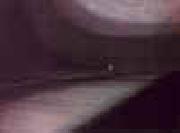 |
Leon Spilliaert
|
|
Belgian 1881-1946
Leon Spilliaert (1881 ?C 1946) was a Belgian symbolist painter and graphic artist.
Spilliaert was born in Ostend and from childhood displayed an interest in art and drawing. A prolific doodler and autodidact, he was predominantly a self taught artist. Sickly and reclusive, he spent most of his youth sketching scenes of ordinary life and the Belgian countryside. When he was 21 he went to work in Brussels for Edmond Demon, a publisher of the works of symbolist writers, which Spilliaert was to illustrate. He especially admired the work of Edgar Allan Poe.
Watercolor, gouache, and charcoal were the means by which he produced much of his best work, including a number of self-portraits executed in black crayon in the early years of the twentieth century. A significant influence on Spilliaert was Odilon Redon, whose expressive use of black finds parallels in his own work. Frequently depicting a lone figure in a dreamlike space, Spilliaert's paintings convey a sense of melancholy and silence.
His later work shows a concentration on seascapes. He died in 1946 in Brussels. |
|
|
|
|
|
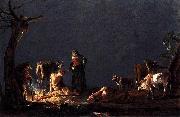 |
Leonaert Bramer
|
|
(24 December 1596 - 10 February 1674 (buried)) was a Dutch painter, best known for probably being one of the teachers of Johannes Vermeer, although there is no similarity between their work. Bramer's dark and exotic style is unlike Vermeer's style. Bramer was primarily a genre and history painter, but also made some unique frescos, not very often found north of the Alps. Leonaert Bramer is one of the most intriguing personalities in seventeenth-century Dutch art. He was a talented and diligent draughtsman, evidently Roman Catholic and a lifelong bachelor.
Bramer was born in Delft. In 1614, at the age of 18, he left on a long trip eventually reaching Rome in 1616, via Atrecht, Amiens, Paris, Aix (February 1616), Marseille, Genoa, and Livorno. In Rome he was one of the founders of the Bentvueghels group of Northern artists. He lived with Wouter Crabeth and got into a fight with Claude Lorraine. He dedicated a poem to Wybrand de Geest. Bramer remained on and off in Rome until October 1627, visiting Mantua and Venice, often for deliveries and to meet Domenico Fetti. In Italy Bramer was nicknamed Leonardo della Notte ("Leonardo of the night"). In 1648 he went to Rome for a second time.
By 1628 he was back in Delft, where he joined the Guild of Saint Luke in 1629 and the schutterij. Among his many patrons were members of the House of Orange, but local burgomasters and schepen also bought his paintings in great numbers.[3] He was a many sided artist, designing for tapestry firms in Delft, painting murals and ceilings, some of which are illusionistic in style. He painted real frescos in the Civic Guard house, the nearby stadholder's palaces in Honselersdijk, Rijswijk, the Communal Land Housde and the Prinsenhof in Delft.[3] Due to the Dutch climate they no longer survive.
He evidently knew the greatest of his Delft contemporaries, Johannes Vermeer, as he came to the latter's defence when his future mother-in-law was trying to prevent him from marrying her daughter.
|
|
|
|
 |
Leonardo Da Vinci
|
|
Italian High Renaissance Painter and Inventor, 1452-1519
Florentine Renaissance man, genius, artist in all media, architect, military engineer. Possibly the most brilliantly creative man in European history, he advertised himself, first of all, as a military engineer. In a famous letter dated about 1481 to Ludovico Sforza, of which a copy survives in the Codice Atlantico in Milan, Leonardo asks for employment in that capacity. He had plans for bridges, very light and strong, and plans for destroying those of the enemy. He knew how to cut off water to besieged fortifications, and how to construct bridges, mantlets, scaling ladders, and other instruments. He designed cannon, very convenient and easy of transport, designed to fire small stones, almost in the manner of hail??grape- or case-shot (see ammunition, artillery). He offered cannon of very beautiful and useful shapes, quite different from those in common use and, where it is not possible to employ cannon ?? catapults, mangonels and trabocchi and other engines of wonderful efficacy not in general use. And he said he made armoured cars, safe and unassailable, which will enter the serried ranks of the enemy with their artillery ?? and behind them the infantry will be able to follow quite unharmed, and without any opposition. He also offered to design ships which can resist the fire of all the heaviest cannon, and powder and smoke.
The large number of surviving drawings and notes on military art show that Leonardo claims were not without foundation, although most date from after the Sforza letter. Most of the drawings, including giant crossbows (see bows), appear to be improvements on existing machines rather than new inventions. One exception is the drawing of a tank dating from 1485-8 now in the British Museum??a flattened cone, propelled from inside by crankshafts, firing guns. Another design in the British Museum, for a machine with scythes revolving in the horizontal plane, dismembering bodies as it goes, is gruesomely fanciful.
Most of the other drawings are in the Codice Atlantico in Milan but some are in the Royal Libraries at Windsor and Turin, in Venice, or the Louvre and the École des Beaux Arts in Paris. Two ingenious machines for continuously firing arrows, machine-gun style, powered by a treadmill are shown in the Codice Atlantico. A number of other sketches of bridges, water pumps, and canals could be for military or civil purposes: dual use technology.
Leonardo lived at a time when the first artillery fortifications were appearing and the Codice Atlantico contains sketches of ingenious fortifications combining bastions, round towers, and truncated cones. Models constructed from the drawings and photographed in Calvi works reveal forts which would have looked strikingly modern in the 19th century, and might even feature in science fiction films today. On 18 August 1502 Cesare Borgia appointed Leonardo as his Military Engineer General, although no known building by Leonardo exists.
Leonardo was also fascinated by flight. Thirteen pages with drawings for man-powered aeroplanes survive and there is one design for a helicoidal helicopter. Leonardo later realized the inadequacy of the power a man could generate and turned his attention to aerofoils. Had his enormous abilities been concentrated on one thing, he might have invented the modern glider. |
|
|

